Ultimate Safety Squat Bar Guide: Benefits Explained
Author:
Unlock your full potential by engaging with our experts and community! Have questions about your fitness journey or looking for expert advice on weightlifting techniques? Don’t hesitate — leave a comment below and Ihor Shymechko will provide a personalized answer and insights to help you reach your goals.
Torokhtiy is reader-supported. Some links are affiliate links, and we may earn a commission at no extra cost to you. See our disclosure page for details.
Squatting is one of the most popular exercises in the world. Yet, I see many are still doing it wrong. So, what is the best Safety Squat Bar, and how does it improve your squats?
Today I want to fully cover this topic, crush some fitness myths, and convince you why the Safety Squat bar is a great alternative to Olympic barbells. Whether you’re recovering from injury, looking to prevent one, or you just want to switch up your routine, an SSB and its advantages might just be the perfect choice
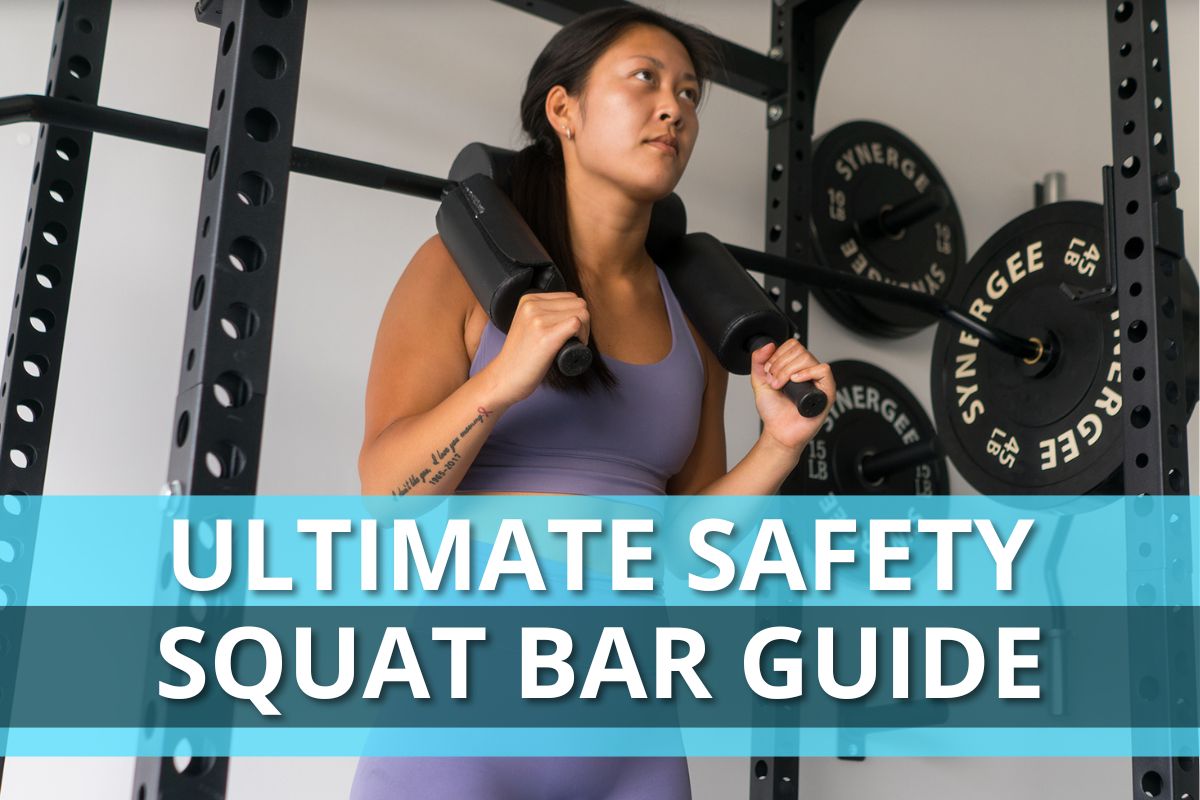
What is a Safety Squat Bar?
The Olympic barbell is one of the most versatile fitness tools ever created. However, being a jack of all trades means it is also a master of none. In recent years, specialized bars have slowly taken over popular exercises from the Olympic barbell.
A Safety Squat Bar is a specialized bar specifically designed to improve your squats and related exercises. It’s also commonly called an SSB, an SSB bar, or simply a safety bar.
Most people will find the SSB better for squats compared to a regular barbell. Only professionals or semi-professionals looking to compete in lifting might prefer sticking to standard Olympic bars for familiarity and practice efficiency.
But for everybody else, from the casual gym goer to the fitness expert, a Safety Squat Bar will improve your workout. As you’ve seen, an SSB can be a multi-purpose tool.
You can use it for a variety of exercises, including front squats, back squats, sumo squats, and other squat variations, but also different types of lunges, raises, good morning variations, and more. Any workout that involves balancing the barbell on your shoulders and neck is better with a Safety Squat Bar.
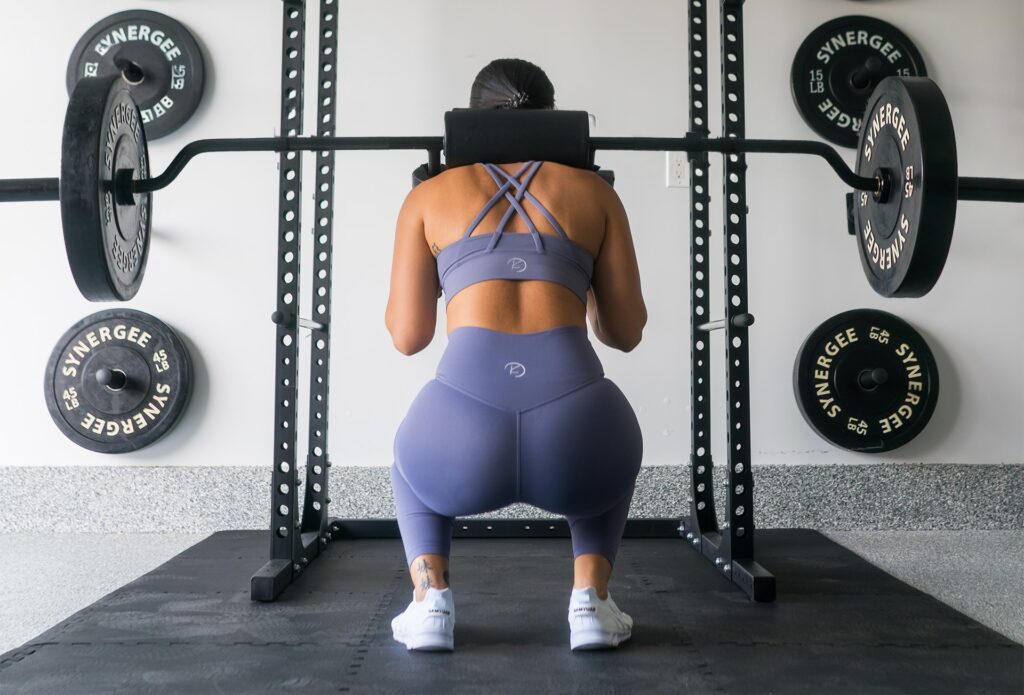
What Are the Benefits of a Safety Squat Bar?
✅ Ease of Use
Even with all modern gym equipment and machinery, plenty of people still prefer using a standard Olympic barbell and squat rack due to familiarity and versatility. However, depending on your body type and mobility, a regular gym barbell may not be ideal for your squats.
For starters, an SSB is just easier to use. Among other benefits, it offers better weight distribution, puts less strain on your body, helps fix your squat posture, and improves your core stability.
✅ More Precise Workouts
People with different body types will find all kinds of difficulties in using a regular barbell for squats and similar exercises. Some people don’t have the best wrist mobility and can hurt themselves struggling to keep their grip on the bar.
Others might have back or shoulder injuries or pain that prevent them from properly performing their squats or getting out as many reps as they can.
Many long-term gym goers know the frustration of not being able to maximize their workout, using regular equipment. All of these problems are solved with specialty bars, such as the Safety Squat Bar.
✅ Improved Performance
Specialty barbells are purposely made to help you improve your performance on traditional exercises. They allow the athlete to increase maximum weight, do more reps, and cleanly perform their exercise, hitting all the vital muscle groups without overbearing others.
A Safety Squat Bar will greatly improve your squat performance by providing you with more stability at your core while lowering the pressure on your knees, hips, and back. Here’s a direct comparison of a regular front squat VS a safety squat.
In this example, the athlete doing regular frontal load squats had to use more back strength, put more strain on his wrists, shoulders, and upper back, and had to use a lighter load than the athlete using a safety squat bar.
✅ Lesser Chance of Injury
Science has shown that an SSB decreases the risks of the most common squatting-related injuries compared to Olympic bars. According to a 2018 study published by the Journal of Strength and Conditioning Research, the athletes tested experienced up to 50% less strain on their body, particularly in the lower back – a common area for squat-related injuries.
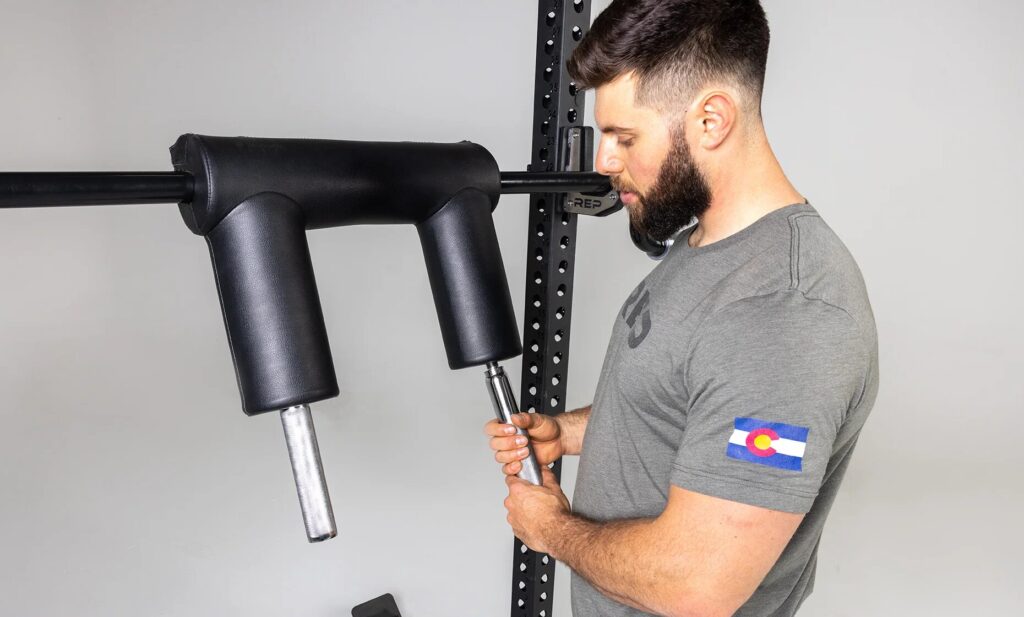
What to Look For in Safety Squat Bars?
1. Steel Quality
Most Safety Squat Bars you’ll find on the market are made from some form of steel. People assume that the higher price, the higher the quality of the bar – but that’s not always the case. The highest quality ones will be made from stainless steel and can be found at varying price points, as we’ve discussed.
Different quality bars also come with different types of finishes that provide not just the look, but also durability to the metal. Some will be bare steel, others use Zinc or black oxide, but the highest quality bars use chrome coating.
2. Tensile Strength
Tensile strength defines the breaking point of your barbell. This number is measured in pounds per square inch (PSI) and can be found on the bars specification list. Most Safety Squat Bars range from 150 to 200 thousand, depending on the manufacturer, with the higher number representing higher quality.
For the majority of people, 160 to 180 thousand is a good range, and those numbers are typically found on commercial barbells. Higher-end barbells go from 180,000-210,000 PSI and those are preferable for people who might be into heavy lifting.
Anything below 150 thousand, while technically not under industry standards, may prove too low if frequently used by various athletes, such as at a gym.
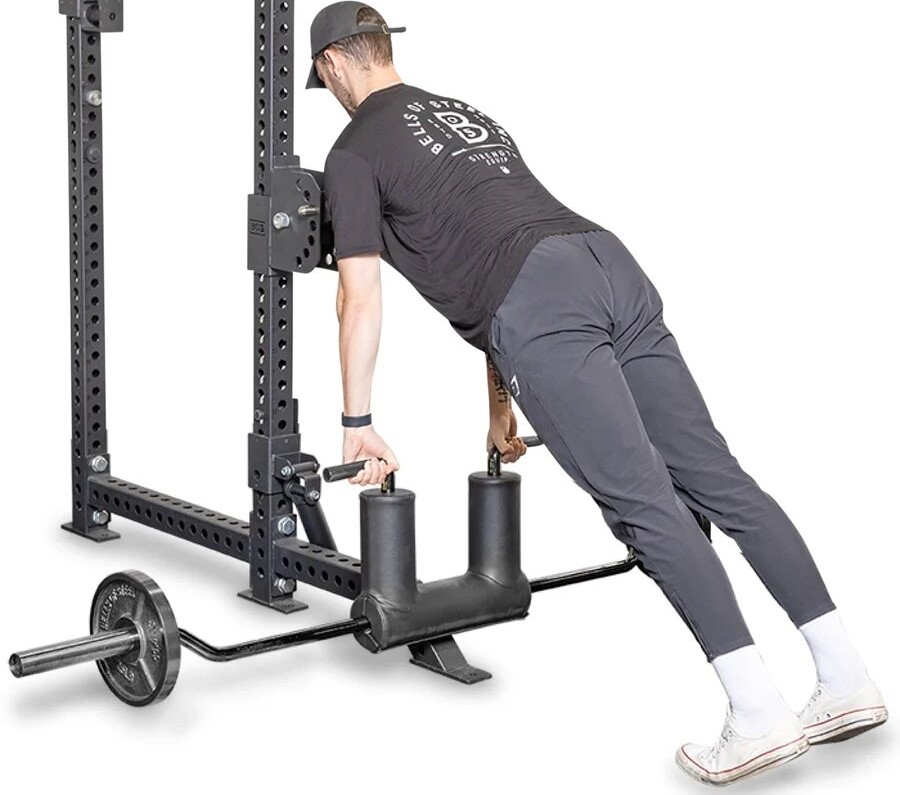
3. Dimensions
I made sure to list out as many of the important measurements I could find for each safety squat bar mentioned in this article. Some of the information is provided by the manufacturers and is readily available on their websites. For others, I simply did it the old-fashioned way and measured them myself.
Do not take this information for granted, while many of these companies have fair return policies, the last thing you want is to realize your bar’s dimensions don’t fit you and go through the hassle of returning it.
Take the time to measure your shoulder-to-shoulder width, find your most comfortable arm spread, and make sure you can fit inside the padding space. If you have a rack you wish to use, make sure the bar can fit on it by comparing the total length, shaft length, and camber drop. All of these SSB bars are made to fit standard 1.9-inch Olympic weights.
4. Knurling
Knurling is the process of etching patterns into metal objects. Barbell knurling is the pattern you see carved onto the metal in places where you’re meant to hold the bar. It allows for a better grip on the bar itself, especially for your hands and fingers.
While not necessary on a Safety Squat Bar due to its handles, some manufacturers may add knurling for use in other exercises or simply for familiarity to users. Most of the time, you’ll be holding your SSB using its handles anyway. However, they might feature knurling or another type of finish for added grip.
5. Spin
On a standard Olympic barbell, the sleeve can “spin” around the shaft. This is done to reduce centrifugal force and thus extended the durability of the bar while allowing for cleaner movement of the athlete. Different types of bars will feature different spin levels.
The majority of Safety Squat Bars will have the regular spin you’re already used to when working out. That’s to say they shouldn’t be too stiff or too loose.
However, as you’ve seen, some bars have fixated sleeves that don’t provide spin. If you don’t have the experience to tell what would be the best for you, stick to bars with “Olympic” markings on them.
6. Crushing Resistance
Crushing resistance measures an object’s total carry load before getting damaged from the excess weight. In simple terms, it’s about how much load you can add to your sleeves before the bar starts to bend, crack, or break.
A standard Olympic barbell carries anywhere from 600-1500 lbs. Despite what the numbers say, you shouldn’t load your barbell to its maximum capacity.
A good rule to set for yourself is to make sure your Safety Squat Bar can take on 1.5 times your desired weight. For example, if your max capacity is 300-400 lbs, the barbell should carry 450-600 lbs.
Luckily, you won’t have to think too hard about this because all Safety Squat Bars I recommended carry 1000 lbs or higher. You can find your SSB maximum capacity on the manufacturer’s specification list.
7. Versatility
Standard barbells have been popular so far because of their versatility, however, they’re never the best option for specific exercises. A Safety Squat Bar, as the name suggests, is a special design made to improve squatting – one of the most popular exercises for beginners and pros. However, that doesn’t mean an SSB is limited to just squats.
The balance of the Safety Squat Bar allows for a variety of exercises, including different types of lunges, good morning variations, and loaded carry exercises.
Some Safety Squat Bars feature knurling along the bar and different types of removable handles and padding, which can adjust the bar for other exercises as well. You can use your SSB for deadlift variations, hip thrusts, JM presses, back raises, and more.
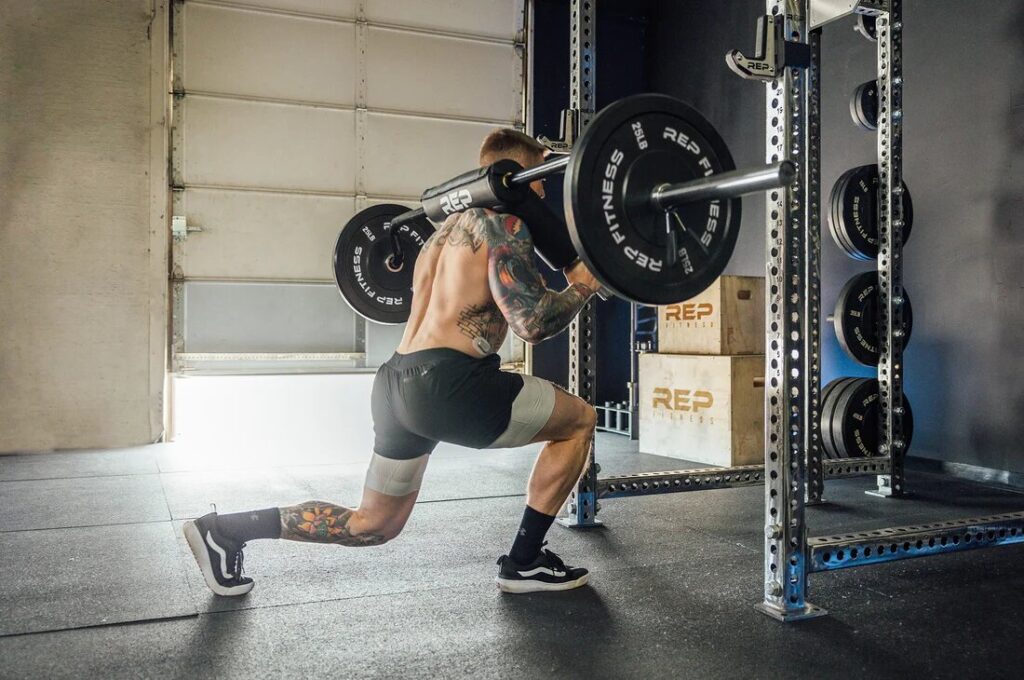
8. Value for Money
You may ask yourself if it’s worth getting a Safety Squat Bar if you already own a standard Olympic barbell. The answer is YES, especially if squatting or similar exercises are part of your regular workout routine.
Note that the most expensive, while often the highest quality, does not always mean the best value for money. That’s why I listed 9 different options for you and described their pros and cons, so you can make the best purchase for yourself.
The best “value for money” Safety Squat Bar in my opinion is the 1# pick, the Titan Fitness Safety Squat Olympic Bar V2. If you’re on a budget, consider one of BotaBay, Happybuy, or RitFit. If you want more comfort, RepFitness and Synergee have some of the best paddings.
If you care about design, Bells of Steel and Rogue Fitness SB-1 may be more visually appealing. If you’re recovering from injuries or have other back, neck, and shoulder issues, you should go for the Marrs-Bar.
Hopefully, we’ve provided enough information for you to make the best choice.
Titan Fitness Safety Squat Olympic V2
- Material: Alloy steel
- Weight: 61 lb
- Length: 90.5 inches
- Diameter: 1.5 inches
- Shaft Length: 48 inches
- Knurling: No
- Spin: Yes, Olympic rotating sleeves
- Weight Limit: 1,500 lb
- Sleeve Length: 16 inches
- Finish Type: Chrome coating on sleeve and shaft
- Camber Drop: 22 degrees
- Grip Length: 6 inches
- Grip Spacing: 12.75 inches
- Shoulder Pad Width: about 13.5 inches
- Inner Pad Spacing: 8 inches
The new design of Titan Fitness Safety Squat Olympic Bar follows standardized Olympic barbell dimensions, which fits right into any professional training center or home gym. It can easily be used with different types of gym racks (squat, power, half-rack, etc.) and carries standardized 1.9-inch gym weights.
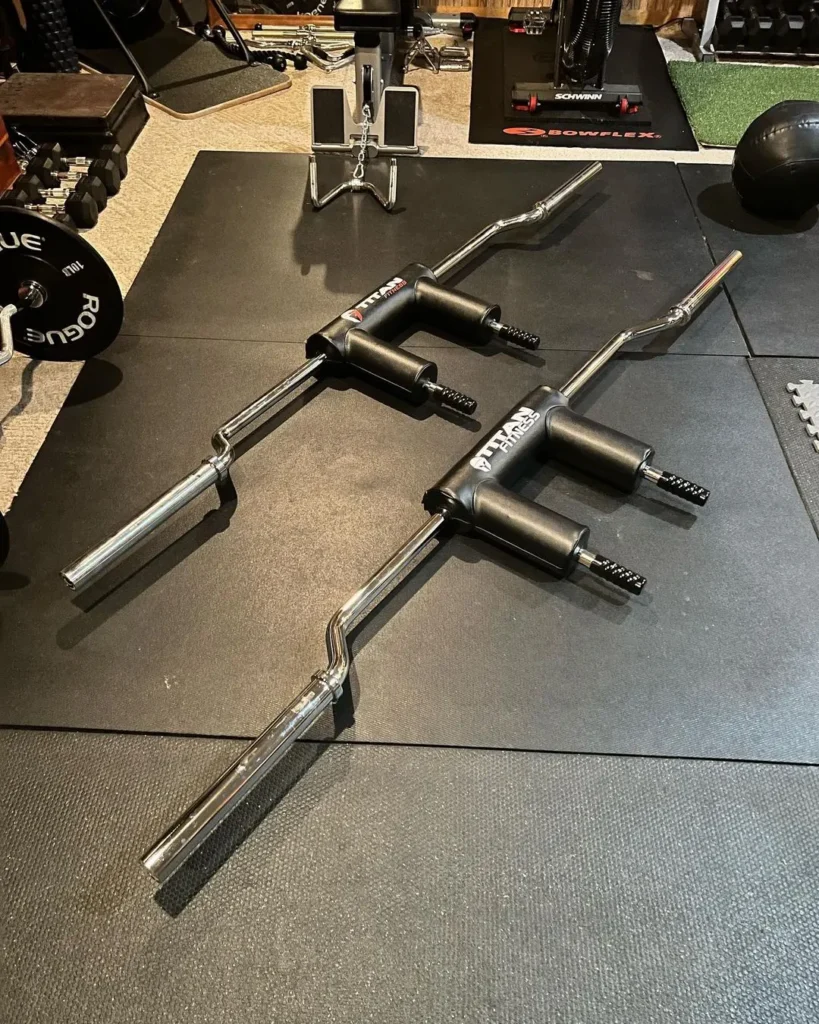
This is the best safety squat bar considering the quality, versatility, and price. It has a clean design and is made from durable alloy steel, complete with the standard chrome finish you’re used to on barbells.
The shoulder and arm pad on this bar is a single connected piece, which removes the possibility of it falling off, sliding around, or tearing as you work out. The leather-covered padding is noticeably thick but comfortable on all athletic builds.
How to Use a Safety Squat Bar?
An SSB is a perfect tool for exercises you used to do with regular barbells. Start by placing the bar on a squat rack or similar machine. Add your desired weights to the sleeves and lock them in place with bar collars. Approach from the front or back, depending on what type of exercise you’re doing.
Position the padding so that it fits nicely around your shoulders and neck. Use the grips to help you find your balance and, when you’re ready, begin your exercise. Adjust the type of exercise and difficulty with your grips.
For example, hold them tightly downwards to imitate a regular back squat, or push them slightly upwards for a frontal squat. Once you’re comfortable, you can even let go of the grips and perform gripless squats, lunges, raises, and more.
The Safety Squat Bar is ideal for all athlete levels, especially home gym owners. Here are 5 additional tips I shared with BoxRox magazine on setting your new squat personal best.
FAQ
Are Safety Squat Bars worth it?
Many self-proclaimed fitness purists are having trouble moving on from the Olympic barbell. To that I say, it’s their loss. If your main focus is doing squats and similar exercises, an SBB will go a long way compared to a standard Olympic barbell. As we’ve discussed, the safety squat bar is easier to use, more ergonomic, safer, and also improves your performance.
How heavy Is a Safety Squat Bar?
Safety Squat Bars come in a variety of shapes and sizes. Most bars are made to imitate Olympic barbell standards, so they should be anywhere from 40-60 lb. on average. However, some options may be a bit heavier – in the 60-70 lb. range – but they make up for it with better performance and weight distribution.
Are Safety Squat Bars safer?
Well, it’s in the name. The SSB was created to make popular squatting-based and similar exercises safer, with better weight distribution and grip. It is especially beneficial if you’re recovering from minor upper body injuries, particularly in the shoulder and back area, which may limit your ability to hold and balance a regular barbell.
Conclusion
Safety Squat Bars and other specialized barbells are slowly becoming the norm in a wide range of workouts. They’ve proven to be easier to use, more efficient, and safer than regular barbells.
The Titan Fitness Safety Squat Olympic Bar V2 is one of the best on the market – it’s excellent value for money and you’ll see a lot of pros recommending it. If you decide to get it, I can’t see you regretting your decision.
Now I want to hear what you think on this subject! Have you used a Safety Squat Bar before? Has it improved your workouts? Did you get a chance to try the Titan Fitness Safety Olympic Bar V2? Leave a comment below or share your experience with me on social media.
Also Read:
References:
- Safety Bar Squat vs Front Squat: Differences, Pros, Cons // PowerliftingTechnique: https://powerliftingtechnique.com/safety-bar-squat-vs-front-squat/
- Effects of the Safety Squat Bar on Trunk and Lower-Body Mechanics During a Back Squat // Journal of Strength and Conditioning Research: https://journals.lww.com/nsca-jscr/Abstract/2019/07001/Effects_of_the_Safety_Squat_Bar_on_Trunk_and.5.aspx
- The Basics of Knurling // Practical Machinist: https://www.practicalmachinist.com/tips-and-tricks/the-basics-of-knurling/
- Top 5 Training Tips – How to Set New Squat PBs // BoxRox: https://www.boxrox.com/how-to-set-new-squat-pbs/
- Photo by Synergee, synergeefitness.ca; photos by Repfitness, repfitness.com; photo by Bells of Steel, bellsofsteel.us.
Why Trust Us?
With over 20 years in Olympic weightlifting, strength training, nutrition coaching, and general fitness our team does its best to provide the audience with ultimate support and meet the needs and requirements of advanced athletes and professional lifters, as well as people who strive to open new opportunities and develop their physical capabilities with us.
By trusting the recommendations of our certified experts in coaching, nutrition, and sports training programming, as well as scientific consultants, and physiotherapists, we provide you with thorough, well-considered, and scientifically proven content. All the information given in the articles concerning workout programming, separate exercises, and athletic performance, in general, is based on verified data.
The product testing process is described in more detail here.
Author: Ihor Shymechko
Pro Olympic Weightlifter, Coach
Best Results: Snatch – 208 kg,
C&J – 240 kg
Ihor has been a professional weightlifter since 1996, boasting over two decades of competition experience. His notable achievements include clinching the European Championship in 2009 and securing a silver medal in the 105kg division at the Senior World Championships in 2011. Ihor represented his country in the 2008, 2012, and 2016 Summer Olympics. After retiring from competitive weightlifting, he transitioned to coaching, leveraging his vast experience to guide athletes who now compete on both national and international stages.



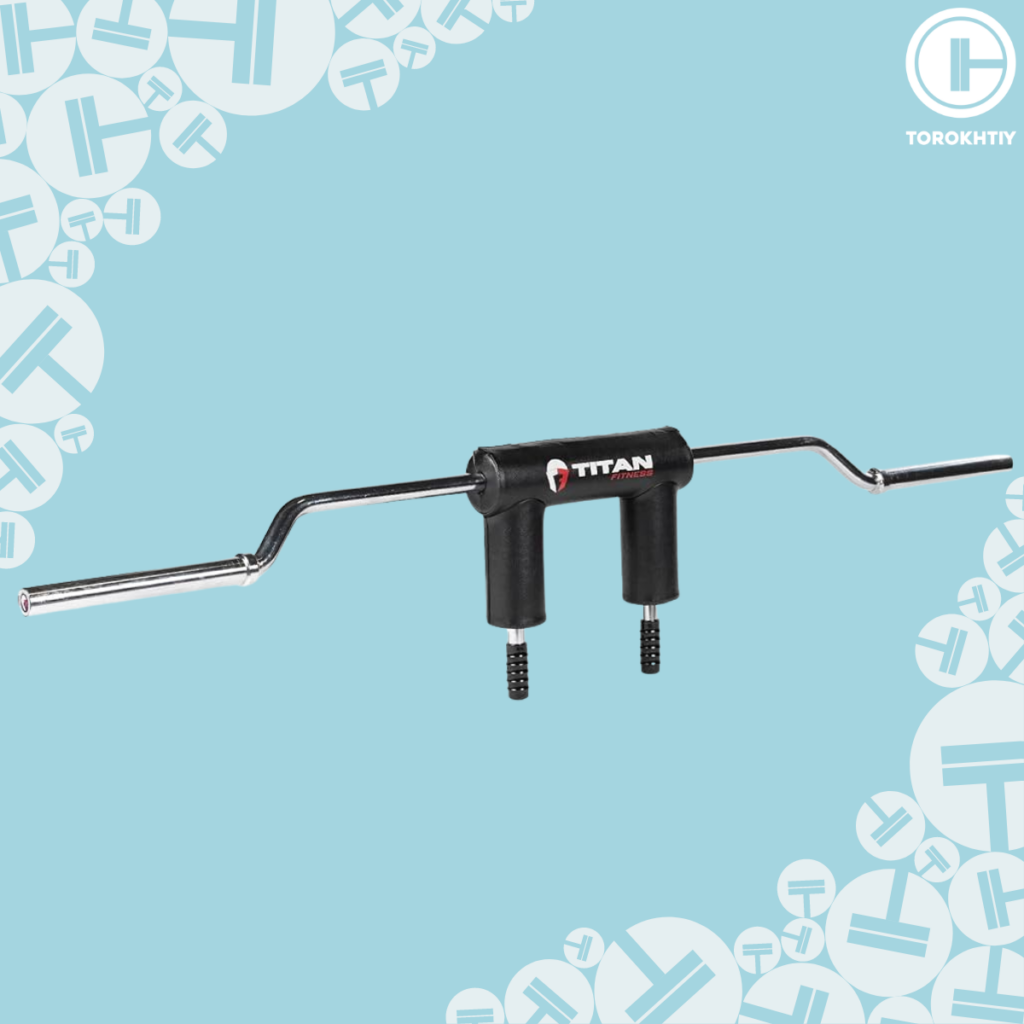
Still have questions after reading our article? Unlock your full potential by engaging with our experts and community! Don’t hesitate — leave a comment below and Ihor Shymechko will provide a personalized answer and insights to help you reach your goals.